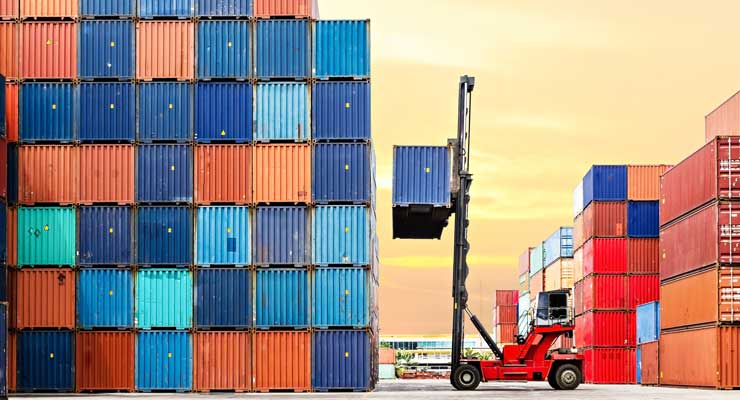- Consolidated shipping is a method of shipping where a consolidator combines individual less than container load (LCL) shipments from various shippers into one full container shipment.
- More businesses are utilizing consolidated shipping, especially with the continued rise of shipping costs, and this could be a growing trend well into the new year.
- Now two years into the supply chain crisis, rates are beginning to stabilize — although on some lanes, prices are still 400 percent higher than they were pre-pandemic.
As ongoing supply chain issues continue to pose logistical concerns, companies are looking for more creative ways to increase the efficiency of operations, and one of these methods is consolidated shipping. Some businesses already offer their customers the option to group together orders in fewer packages, but will more follow this lead?
What is Consolidated Shipping?
According to C.H. Robinson, consolidated shipping is a method of shipping where a consolidator combines individual less than container load (LCL) shipments from various shippers into one full container shipment. Participating in consolidated shipping earns the shipper preferred rates. When the full container shipment reaches its destination, the shipments are then deconsolidated into their original LCL shipments.
LCL vs. FCL
LCL is when a shipment is too small in mass to require a full container to ship. These types of shipments are priced based on volume and are consolidated to fit into full containers. LCL shipments are commonplace in supply chains.
The alternative is full container load (FCL), which is when a shipment does have enough mass to require an entire container to ship. This type of shipment usually has a flat rate per container. Unlike with LCL shipments, FCL shipments are loaded and sealed at the origin by the supplier or manufacturer.
The Benefits of Consolidated Shipping
“Consolidation provides opportunities for companies to pay less based on the minimum shipping charges they are faced with,” Michael Prendergast, Managing Director with Alvarez & Marsal Consumer and Retail Group, said. “In addition, logistic expenses such as fuel, when consolidating more containers and packages into less containers and packages, will cost less for you to deliver products. You will also have less labor costs from a picking and packaging standpoint if you have less trucks and containers.”
More businesses are utilizing consolidated shipping, especially with the continued rise of shipping costs, and Prendergast believes this could be a growing trend well into the new year. He also sees a rise in dropshipping directly to consumers as well, since it gets the products directly into their hands faster than when going through a retailer. As more companies continue to innovate new solutions around the supply chain and shipping challenges, these options can really help to save on costs and get the job done.
Increased Shipping Costs & Delays
At the beginning of the pandemic, attempts to hedge against dramatic rate drops via capacity management contributed to an increase in prices when consumer demand shot up. Now two years into the supply chain crisis, rates are beginning to stabilize — although on some lanes, prices are still 400 percent higher than they were pre-pandemic, according to Freightos.
With the return of transatlantic passenger travel, the Freightos Air Index shows Europe – US East Coast prices are 28 percent lower than a year ago, but with added fuel costs and labor shortages, are still about 50 percent higher than normal. Climbing oil prices translate directly to higher diesel prices. U.S. diesel prices are up significantly from last year, and are likely to go higher. These costs could be passed down to shippers, making international shipping even more expensive.
In the US, warehouse space remains scarce and renewed rail backlogs are becoming a growing problem. All of this can cause fluctuations in transit time for imported and exported goods.
How Consolidated Shipping is Impacting the Retail Industry
Especially with the holiday season practically here, retailers are going to be ramping up their orders and many may even take the dropshipping route to ensure their customers receive their products on time. Instead of adding the stress of the cost of shipping on top of an already demanding time of the year, consolidated shipping can most certainly help to not only save you money, but also lessen the workload on your warehouse employees.
“There is a tremendous desire for retailers to get the right products into consumers’ hands as fast as possible,” Prendergast said. “Years ago, fashion industry experts innovated the space and delivered products faster than historial lead times, but today with social media, it has basically become table steaks to deliver faster. Consolidation is just one component of a condensed supply chain and a sped up cycle calendar to deliver merchandise as quickly as possible.”
